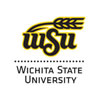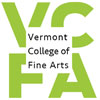
We’re just a week or so into the summer season and things are already heating up. Several schools across the U.S. have leaped into the animation space with a unique mix of programs that incorporate animation into everything from Media Arts to Journalism. A celebrated journalism school has joined forces with a Silicon Valley-based animation and software content developer, while a major state school has just received approval for a new Bachelor of Applied Arts (BAA) that it thinks will be a “game-changer for students and area business.” And that’s just the beginning.
A first-of-its-kind MFA program will celebrate its upcoming fourth year in existence and a southern community college has revamped a popular program to reflect technological advances that some say are “already revolutionizing the manufacturing industry.” For this high-tech college, changing with the times meant adding animation to the curriculum.
We are delighted to report that the four schools making headlines today are Michigan State University’s School of Journalism, Wichita State University, Vermont College of Fine Arts, and East Mississippi Community College. Read on.
 Michigan State University, School of Journalism – East Lansing, Michigan
Michigan State University, School of Journalism – East Lansing, Michigan
Michigan State University’s (MSU) School of Journalism has announced a new strategic partnership with Reallusion—a Silicon Valley-based animation and software content developer. Reallusion Software tools give students the “industry type of production experience they can use to move from initial storyboard to full animated film, as well as 360 degree film production, which also fits in with MSU Journalism’s Immersive initiatives,” said Stacey Fox, MSU’s professor of animation, mixed realities and immersive journalism.
Reallusion Vice President John Martin says that he is proud to partner with MSU’s School of Journalism. The school’s “progressive curriculum” he says, “engages students with Reallusion’s 2D & 3D real-time animation, motion capture, and production technologies that will equip students with vital industry experience.”
Per the school, students in the School of Journalism’s animation courses are “blending reporting traditions with new digital tools, allowing them to capture motion, puppeteer facial expressions and lip-synching in real time to characters.” The courses currently offered at the school include CrazyTalk Animator, Character Creator, Leverage iClone, and popVideo “as tools to learn and apply innovative media production skills that are at the forefront of television, film, virtual reality, and interactive media.”
Part of the College of Communication Arts and Sciences, the School of Journalism’s Animation and Comics Storytelling in Media courses and minor are open to all MSU undergraduates. There are no prerequisites, which enable exposure and collaboration in the creative technology mediums.
Founded in 1855, Michigan State University was the Prototype for 69 land-grant institutions established under the Morrill Act of 1862. With 17 degree-granting colleges, the school offers more than 200 programs of undergraduate, graduate, and professional study to a population of 50,000+ students. Michigan State University is accredited by the Higher Learning Commission of the North Central Association of Colleges and Schools (HLC NCA).
 Wichita State University – Wichita, Kansas
Wichita State University – Wichita, Kansas
The Kansas Board of Regents has approved a new Bachelor of Applied Arts in Media Arts (BAA) at Wichita State University (WSU). The BAA is extremely rare in the U.S., with no comparable degrees among the six state universities. WSU created the program in response to demand in the region for skilled artists in a range of media arts disciplines. Developed by WSU's College of Fine Arts and Elliott School of Communication, the 120 credit hour program will focus on animation, audio production, game design and filmmaking.
Per the school, “the BAA could be a game-changer for students and area businesses. The degree merges arts, science and technology, creating opportunities in emerging creative technologies that will vastly improve students’ career competitiveness. These skills will result in graduates who are more qualified for a variety of media arts jobs” such as CGI animator, videographer, film director, video game designer, cinematographer, web designer, sound engineer, video or film editor, sound engineering technician, and more. “With recent technological advances, there is more demand in the industry for employees to possess a variety of these skills,” says the school.
The WSU BAA in Media Arts will start this fall, so applications are being accepted now.
Established in 1895, Wichita State University offers 70 undergraduate degree programs in more than 200 areas of study, 41 master’s degree programs, 12 doctoral degree programs, and more than 20 graduate certificate programs. The student population is more than 15,000, with 86 percent hailing from Kansas and the rest from every county in the state and 110 countries. WSU is accredited by the Higher Learning Commission of the North Central Association of Colleges and Schools (HLC NCA).
 Vermont College of Fine Arts – Montpelier, Vermont
Vermont College of Fine Arts – Montpelier, Vermont
Vermont College of Fine Arts (VCFA) launched a new low-residency MFA in Film Program in 2013 to address a changing film industry and “the need for artists to revolutionize the ways motion pictures are created and experienced.” The program, which is celebrating the beginning of its fourth year in existence, has already produced graduates that have gone on to be selected by LA Film Festival, Tribeca Film Festival and Amazon Underground Film Festival, as well as winners of awards at Krakow Film Festival and Aspen Shortfest, to name a few.
The 60-credit MFA degree takes place over two years and the programs’ four six-month semesters operate year-round, consecutively, and begin with weeklong residencies on VCFA’s Montpelier campus in April and October. Per VCFA, “campus residencies offer students an intensive week of workshops, lectures, critiques, screenings, and dialogue. Students are also paired with faculty advisors for the upcoming semester during residency.” Students typically devote a minimum of 25 hours per week to their MFA projects, which may include animations, live action films, transmedia, or screenplays.
“Student projects vary in length and genre,” and VCFA faculty encourage “deep exploration and experimentation regarding form and content.” Students may focus on one large-scale project for their entire two years in the program, or create multiple projects, in a series or concurrently. Work will also involve readings, film viewings, assignments, and other forms of research and preparation.
The last semester of the program ends with a final fifth residency, when Thesis Projects are presented for review. Students may begin their studies in April or October.
Vermont College of Fine Arts opened its doors as Newbury Seminary in Newbury, Vermont, in 1834. The school, which is the only college devoted exclusively to graduate fine arts education,
offers seven distinctive MFA degrees and a unique MAT/MA graduate program in Art & Design Education. MFA programs include Film, Graphic Design, Music Composition, Visual Art, Writing, Writing & Publishing, and Writing for Children & Young Adults. VCFA serves nearly 400 students and it is accredited by the New England Association of Schools & Colleges (NEASC).
 East Mississippi Community College – Scooba, Mississippi
East Mississippi Community College – Scooba, Mississippi
If you don’t think community colleges can offer cutting-edge programs, think again! East Mississippi Community College (EMCC) is the first college in the State of Mississippi to offer an E-Commerce Technology program designed to meet the growing need for employees in the online business sector. Now, the school has revamped its Engineering Technology Drafting & Design program to “reflect technological advances some say are already revolutionizing the manufacturing industry.”
To keep up with technology, EMCC’s Engineering Technology Drafting & Design program now offers students training in the use of three-dimensional software and 3D printing techniques and applications. Three new classes have been added and others have been redesigned. The new additions include Inventor 3D Model and Animation, 3D Modeling Advanced Design, and Revit Architecture.
Graduates of the two-year program earn an Associate of Applied Science (AAS) degree in Engineering Technology Drafting & Design and they receive AutoCAD and Inventor 3D certification. Graduates are qualified to work in a range of areas from structural and architectural design to civil design and architectural animation, which is a growing field. “The sky is the limit on what our students can do,” said Engineering Technology Drafting & Design instructor Carlton Hollis. And most jobs in these fields “pay pretty well,” he said.
Established in 1927, East Mississippi Community College is a public community college serving six counties in East Central Mississippi. The Scooba campus serves more than 1,000 residential and commuter students seeking university-parallel programs, workforce programs or career-technical programs leading to a certificate or two-year associate’s degree. EMCC is fully accredited by the Southern Association of College and Schools Commission on Colleges (SACSCOC).

